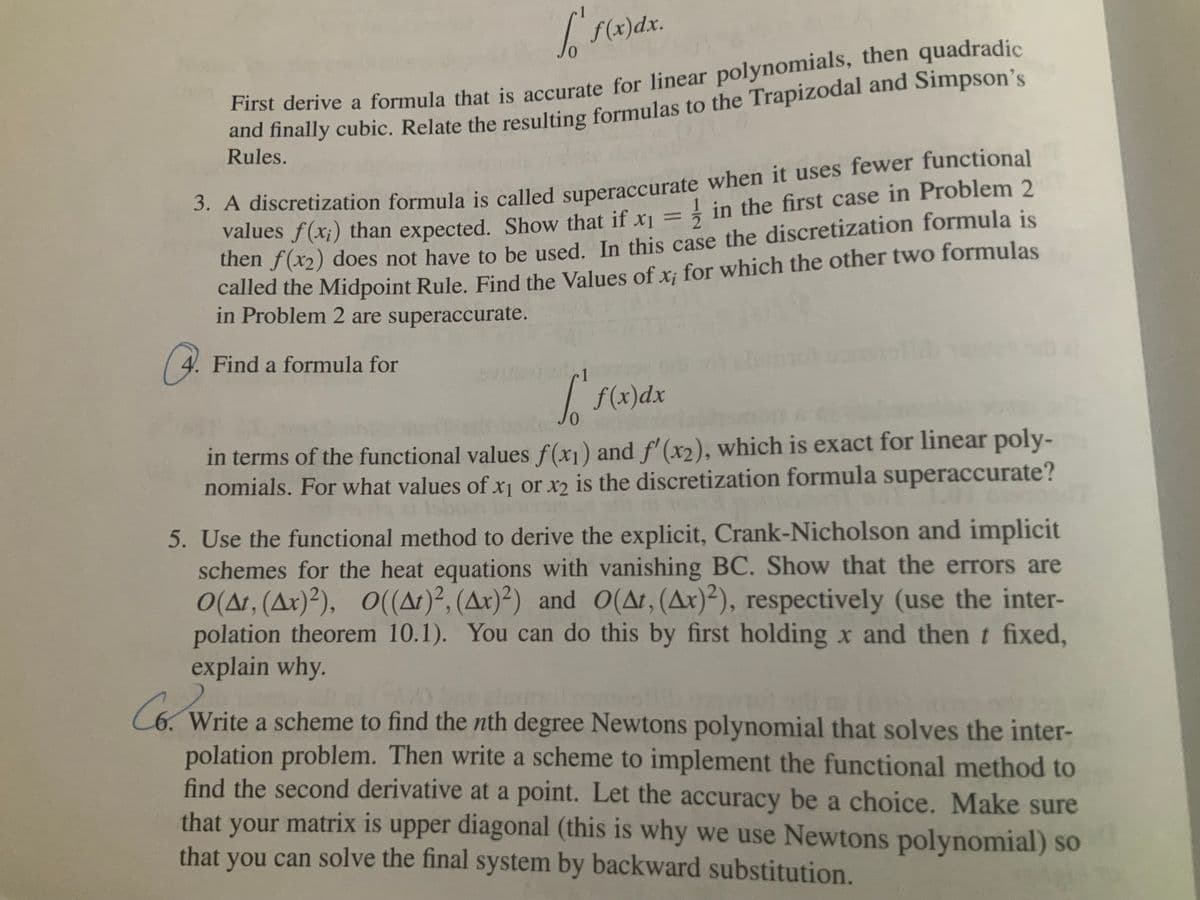Find a formula for [ f(x)dx in terms of the functional values f(x₁) and f'(x2), which is exact for linear poly- nomials. For what values of x₁ or x2 is the discretization formula superaccurate? auplinit Crank Nicholson and implicit
Find a formula for [ f(x)dx in terms of the functional values f(x₁) and f'(x2), which is exact for linear poly- nomials. For what values of x₁ or x2 is the discretization formula superaccurate? auplinit Crank Nicholson and implicit
Algebra & Trigonometry with Analytic Geometry
13th Edition
ISBN:9781133382119
Author:Swokowski
Publisher:Swokowski
Chapter4: Polynomial And Rational Functions
Section: Chapter Questions
Problem 5T
Related questions
Question

Transcribed Image Text:S
0
f(x) dx.
First derive a formula that is accurate for linear polynomials, then quadradic
and finally cubic. Relate the resulting formulas to the Trapizodal and Simpson's
Rules.
3. A discretization formula is called superaccurate when it uses fewer functional
values f(xi) than expected. Show that if x₁
in the first case in Problem 2
then f(x2) does not have to be used. In this case the discretization formula is
called the Midpoint Rule. Find the Values of x; for which the other two formulas
in Problem 2 are superaccurate.
4. Find a formula for
[
f(x) dx
in terms of the functional values f(x₁) and f'(x2), which is exact for linear poly-
nomials. For what values of x₁ or x2 is the discretization formula superaccurate?
5. Use the functional method to derive the explicit, Crank-Nicholson and implicit
schemes for the heat equations with vanishing BC. Show that the errors are
O(At, (Ax)²), 0((At)², (Ax)2) and O(At, (Ax)2), respectively (use the inter-
polation theorem 10.1). You can do this by first holding x and then t fixed,
explain why.
C6. Write a scheme to find the nth degree Newtons polynomial that solves the inter-
polation problem. Then write a scheme to implement the functional method to
find the second derivative at a point. Let the accuracy be a choice. Make sure
that your matrix is upper diagonal (this is why we use Newtons polynomial) so
that you can solve the final system by backward substitution.
Expert Solution
This question has been solved!
Explore an expertly crafted, step-by-step solution for a thorough understanding of key concepts.
This is a popular solution!
Trending now
This is a popular solution!
Step by step
Solved in 4 steps with 3 images

Recommended textbooks for you

Algebra & Trigonometry with Analytic Geometry
Algebra
ISBN:
9781133382119
Author:
Swokowski
Publisher:
Cengage

Algebra & Trigonometry with Analytic Geometry
Algebra
ISBN:
9781133382119
Author:
Swokowski
Publisher:
Cengage